
Should kids act to stop bullying, or should they leave it up to adults?
- Subject:
- English Language Arts
- Material Type:
- Homework/Assignment
- Author:
- Kristin Robinson
- Date Added:
- 01/03/2020

Should kids act to stop bullying, or should they leave it up to adults?

This lesson plan and assessment takes you on a journey to discover if pollinators find your campus a hospitable home. Core compliant for Grades 3-5, but adaptable to all ages. Are you working with distance learners or in a non-traditional teaching environment? This lesson plan is perfect for you! All you need is a pencil and outdoor space, including sidewalks, local parks, greenways, libraries, and beyond!
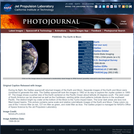
Photo of the Earth & Moon created from images from the the Galileo spacecraft.

Find out more about the octopus, a smart and resourceful creature.

This inquiry by Amy Johnson, Longview Public Schools, is based on the C3 Framework inquiry arc. The students will highlight the two primary sources then reflect. They will then do the Open Mind activity illustrating both points of view they learned from the primary sources, develop a three-event timeline and create a newspaper front page describing “What really happened March 5, 1770.”

This inquiry by Amy Johnson, Longview Public Schools, is based on the C3 Framework inquiry arc. Students will look at multiple points of view on an assigned Intolerable Act. After researching primary sources, student will create a newspaper using BEST evidence from their sources that answers the question, "Why would this event the colonists to revolt?"
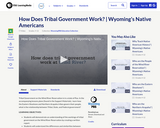
Tribal Government on the Wind River Reservation is in a state of flux. In the accompanying lessons plans (found in the Support Materials), learn how the Eastern Shoshone and Northern Arapaho tribes govern their people, what is the relationship between Tribal, State, and Federal government?
LEARNING OBJECTIVES:
Students will demonstrate an understanding of the workings of tribal government on the Wind River Reservation by creating a written report.
Students will understand the differences and similarities between state, tribal and federal governments and their functions, structures, and powers.

10-lesson fifth grade unit to build classroom culture focused on identity, diversity and community.
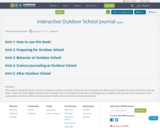
This resource will primarily be used prior to going to outdoor school for a 5th grade class. Though some of the resources might seem like a stretch for that age range it allows for some differentiation for those students that are looking to expand their knowledge base. In addition, this journal covers some basic rules and guidelines for living within a group of people which is why we include some dining etiquette.
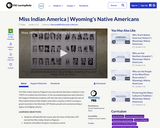
The Miss Indian America Pageant was launched by Sheridan residents in the 1950's to combat discrimination. In the accompanying lesson plan (found in the Support Materials) students will view the story told through the eyes of Miss Indian America title holders who held a reunion in 2013, serving as grand marshals in the Sheridan, WY Rodeo parade and commemorating a legacy of bridging cultures.
LEARNING OBJECTIVES:
Students will identify the reason why the town of Sheridan, WY started the Miss Indian America Pageant.
Students will define the given vocabulary words.

Discover the history around delicious doughnuts.

Find out some fun and unusual facts about penguins in this short and interesting article.
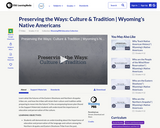
Learn what the futures of the Eastern Shoshone and Northern Arapaho tribes are, and how the tribes will retain their culture and tradition while preparing to move into the future? In the accompanying lesson plan (found in the Support Materials) students will understand the importance of education and perservation of the culture.
LEARNING OBJECTIVES:
Students will demonstrate an understanding about the importance of education and preservation of the language and culture among the Northern Arapaho and Eastern Shoshone Tribe from the past, present, and future.
Students will learn about the Federal Indian Policy to civilize Native Americans through the establishment of Native American Boarding Schools incorporating key vocabulary words.
Students will learn about how the practice of forced assimilation contributed to the diminished use of the Shoshone and Arapaho people’s lifestyle, languages, and traditions.
Students will discuss the development of Indian boarding schools in the United States and Wyoming.
Students will analyze the differences between the early educational experiences of the Native American and non-native students.
Students will examine the importance of education as a value that the Shoshone, Arapaho, and non-native communities share.
Students will consider how Native American students and non-native students can learn from each other to dispel the myths and stereotypes that exist in contemporary society.
Students will learn why oral traditions are important.
Students will understand why respect for elders is important in the tribe.
Students will gain an awareness of why traditional dancing and singing is important to traditions and culture.
Students will explore the significance of the buffalo to the Shoshone people living on the Wind River Reservation.
Students will learn that through traditional concepts of understanding, the Shoshone people, as well as many other Plains tribes, were able to survive through their sustenance on the buffalo.
Students will discuss the relationship that Native American people have with the buffalo (i.e., spiritual, sustenance, etc.) and how oral traditions play a critical role in the preservation of Native ways of knowing.

Use a 3 ½ minute Ted Talk video in EdPuzzle to learn about and answer questions about our government. Standard 5.05 Explain why people create governments and describe the structure of the government in the United States and how it functions to serve citizens.I can describe the purpose of a democracy/government.I can identify the three branches of government; Legislative, Judicial, and Executive.I can describe the functions of the three branches of government and checks and balances.Pre-lesson: Review prior knowledge on American Revolution

Should grades always come before sports?

In this Wonder of the DayR, learners will be introduced to the French Revolution. They will explore what the French Revolution was,What caused the French Revolution, and What the French Revolution accomplished.
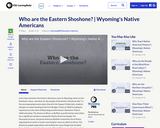
Learn how and when the Eastern Shoshone came to Wyoming, what are the Shoshone values, and what are the people of the Eastern Shoshone like? In the accompanying lessons plans (found in the Support Materials), students will gain an understanding of the Fort Bridger Treaty of 1868 including its importance to the state of Wyoming and the Eastern Shoshone Tribe in 1868 and today. The American Bison, or Buffalo as preferred by most tribes, has a significant existence among the Native American people. For thousands of years, the great American Buffalo roamed the Great Plains, migrating from north to south, searching for areas on which to thrive. The Shoshone people depended on the buffalo for many things that included food, clothing, and shelter. Every part of the buffalo was used and provided for the people.
LEARNING OBJECTIVES:
Students will study (Highlight, paraphrase and report) the Treaty of 1868 between the Eastern Shoshone Tribe and the United States Government.
Students will learn about the Eastern Shoshone people through the use of research and technology.
Students will understand that the history of the Shoshone people in the Wind River Mountains dates back thousands of years.
Students will understand that the circle of life continues in a perpetual cycle and is passed on through oral tradition. These stories often taught a lesson to young people.
Students will understand the indigenous perspective of interconnectedness. Students will understand how bison populations were devastated by western expansion.
Students will learn how to construct, read, compare and analyze different population graphs.
Students will understand how the diets of the Shoshone people varied depending on the areas in which they lived.
Students will acquire knowledge of the Wind River Reservation communities and be able to identify these locations on a map.
Students will be able to further describe how their culture has shaped them.
Students will be able to define the concept of culture.
Students will be able to explain some of the attributes of culture.
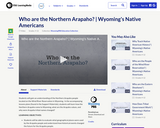
Students will gain an understanding of the Northern Arapaho people located on the Wind River Reservation in Wyoming. In the accompanying lessons plans (found in the Support Materials), students will learn how the Northern Arapaho come to Wyoming, what are the Arapaho values, and why were Arapaho tribal names changed?
LEARNING OBJECTIVES:
Students will be able to evaluate what geographical places were used by the Arapaho people and understand how historical events changed the future for the Arapaho people.
Students will compare and contrast between their social and ceremonial structures.
Students will understand the hierarchy of the Arapaho Tribe.
Students will analyze how their social and ceremonial structures contribute to their cultural identity.